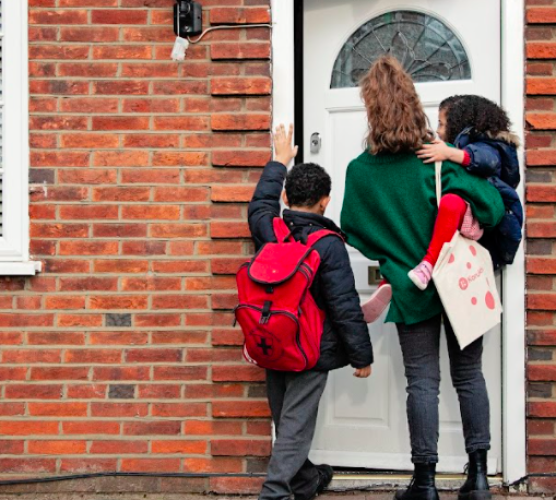After a concerning 3 years caused by the pandemic, parents and pupils had to choose schools last year without actually being able to see the school in person and for many kids starting their schooling career, much of it was spent at home in lockdown. The new school year for 2023 looks much more promising, with many parents having been able to visit schools in their area to make the best possible choices for their children.
The announcement of school places is still an anxious time for parents. Choosing the right school, and securing a place there is a significant moment in a child’s life, and sets the precedent for the start of their schooling career. The anxiety is heightened by the cold-fact that England’s schooling system has been under pressure the last few years due to a rise in the school-age population. However, it does look like that situation is starting to improve in primary-age children as the National Pupil Projections reveals that the population attending primary and nursery schools peaked in 2019 and the figures have started to drop due to continued reductions in birth numbers since 2013.
Added to this, is the good news for children starting reception this year. According to stats from the Office for National Statistics 2017 was a lower birth year. There were 679,106 live births in England and Wales in 2017, a decrease of 2.5% from 2016 and the lowest number of live births since 2006.
Parents also have their own personal requirements for choosing a school, unique to their own family’s needs and values, and often their school of choice can be over-subscribed or not in their area. A child’s chance of winning a place at their preferred school will also vary greatly on where they live.
Explore Education Statistics showed that last year, the proportion of primary school applicants who received an offer of their first preference school rose by 1.6% to 91.8%. This was based on a 5.1% drop in the number of applicants for a place at primary school, to around 580,700. So you could say things are looking good for 2022 applicants.

However, you should be prepared for when National Offer Day arrives and you don’t get your first choice of primary school.
On the day of the announcement, the councils will reveal what schools primary-age children (particularly reception-age kids) will go to from September. For some, there’ll be jubilant celebrations, and others might be disappointed to learn they didn’t get their first, or even their second choice.
Some advice on what to do if this happens:
- Firstly, parents should contact their preferred school and ask them to add their child to the waiting list. Not everyone offered a place will accept it, and sometimes a place will come up sooner than you think. Between April, when places are announced, and September, when school begins, your child could even get their spot.
- Secondly, you can appeal it with the admission authority – usually the council, but can occasionally be directly with the school. The appeal process is lengthy, and the parents will need to submit strong evidence as to why it is preferable for their child to attend another school.
- In the meantime, your child would still attend the granted school, until such time the appeal has been approved or a spot on the waiting list becomes available.
- Join Facebook Groups in your area. You might find you are not the only parent going through this, or you could be pleasantly surprised to find your child settling into the school, despite your initial reservations.
So what’s next?
As a parent you’ve navigated choosing a school and submitting your application, then you’ve found out what school you’ve got, now it’s time to think about after-school care, come September.
30% of local authorities accept they don’t have enough childcare places and research reveals that more than 11,000 childcare places were lost during the Covid-19 pandemic. In many areas, after-school clubs affiliated to schools are oversubscribed or have long waiting lists.While it definitely shows the genuine childcare crisis facing parents of today, there are other alternatives, such as a Koru Kids after-school nanny.
Our nannies work in your home just the hours you need, from as little as 3 hours a week. They bring calm to your family home. Covering school pick-ups, homework, den making, glitter-fests and dinner. Giving you the space to work right up till the end of the day, and then enjoy the good stuff with your little one.
If you’re looking for after school childcare to bring peace and calm to your home, browse part-time nannies in your local area here.

After school nannies are flexible and can fill those tricky hours that other options can’t cater for:
“The arrangement is really convenient for us both. It is amazing to have someone come to the house to get my daughter ready for school. Gemma will also do longer hours if I’m running late.” – Liz, a Koru Kids parent.
“I needed flexibility and not that many hours which isn’t catered for by other nannying agencies.” – Katie, a Koru Kids parent.
They can be a great alternative for kids who aren’t enjoying their after school club:
“My kids were in after school club but my daughter was much younger than the other children and the days were too long for her.” – Katie, a Koru Kids parent.
“I needed to find something quickly as my daughter hated after school care and breakfast club.” – Liz, a Koru Kids parent.



